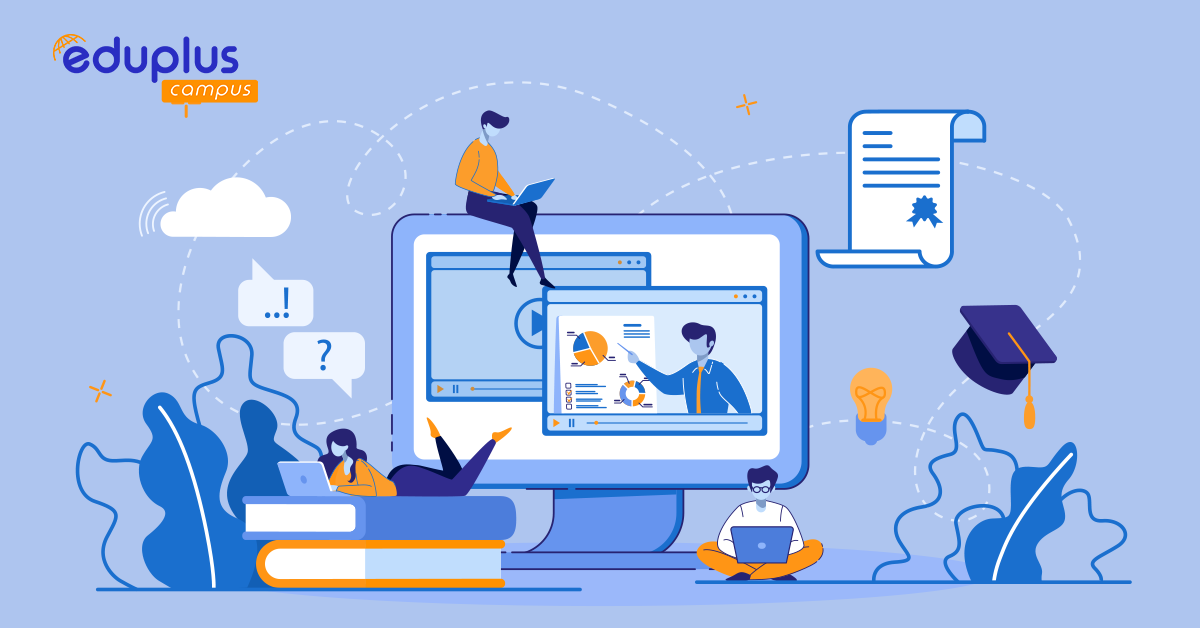Classroom 2.0: The Digital Revolution in the Education Industry
Some of the best Ed-Tech tools that has redefined the system and that we consider remaining relevant in the long run are stated below
1. Zoom
Zoom was named 2018 Gartner Peer Insights Customers’ choice for meeting solutions and is our number 1 pick for video conferencing tools for online classes. Zoom has temporarily removed the 40-minute time limit on its free basic accounts for primary and secondary schools affected by the Coronavirus. Zoom provides secure video conferencing for hybrid classrooms, admin meetings, office hours, and more.
Zoom provides HD quality audio and video calls so that students can learn more effectively. With many collaborative features onboard, Zoom provides one-click content sharing, real-time collaboration, annotation, digital whiteboard solution, and more. A great feature is the ability to record classes and transcriptions, allowing students to take the lecture with them and learn at their own pace.
Some other cool features of Zoom includes video breakout rooms, group chats, polling, and multi-sharing. Teachers can create and repurpose video content into easily digested videos, providing a better learning experience. Zoom also provides hardware products to enhance the physical classroom experience and combine the power of technology and learning.
Some cool features of Zoom include:
Polling, chats, and other collaboration features
Free for primary students
Hardware for classrooms
Microsoft team
2. Kids A-Z
Kids A-Z (which emphases the more widely known Raz-Kids) is an award-winning resource that provides students with leveled books, teachers with progress reports, and everyone involved with another great platform to help practice reading skills.
Built into Kids A-Z is a library of differentiated books at 29 reading levels. These books can be accessed at home or school. It is a great app to use when teaching small group reading, for students’ silent reading time, or for read-alouds.
There are easy-to-use online controls that allow teachers to quickly manage and track their students’ progress. Additionally, there are built-in incentives and rewards that students use to personalize their “Star Zone.” The downfall is that this tech tool does come with a cost, but don’t let that sway you from its many benefits.
3. FUNecole
This cloud-based program incorporates an interdisciplinary program with components of STREAMS (Science, Technology, Reading and Writing, Engineering, Arts, Math, and Social Sciences), digital literacy, computer science coding, 21st-century skills, and social-emotional learning.
One of the teacher benefits of FUNecole is that if you are not strong in computer science or coding, there are materials to help you through so that you can help your students.
The FUNecole diverse cartoons feature Mr. Attitude, Starjack the Innovator, Ram the Doer, and Systematic the Analyst. These characters all have features to reach out to the diverse economic and cultural backgrounds of our students.
In the end, as great as technology is and will be in all of our lives and the lives of our students, by its nature it makes it easier for the introvert or person who would rather ‘hide behind a screen’ to do so and not have as much face-to-face interaction. With that at times comes a natural regression in basic people skills.
The programs listed above and many more online will help many of these students have a safe and comfortable way to come out of their shell in a way that is more familiar to them and at the same time, learn valuable skills that will help make them successful in their future endeavors.
4. Floop
As recommended by Jennifer Gonzalez of Cult of Pedagogy
Floop is a cloud-based website where students can receive annotated feedback from teachers and peers. Students upload images of an assignment to the platform, and teachers put markers in places where they want to provide written feedback. Students are able to see and respond to comments, creating a feedback loop that allows teachers to see patterns of student learning.
Students get the feedback they need when they need it. Give feedback 4x faster than traditional methods with a digital dropbox and comment banks.
5. Khan Academy
khan Academy offers practice exercises, instructional videos, and a personalized learning dashboard that empower learners to study at their own pace in and outside of the classroom. They tackle math, science, computer programming, history, art history, economics, and more. Their math missions guide learners from kindergarten to calculus using state-of-the-art, adaptive technology that identifies strengths and learning gaps. Khan Academy are also partnered with institutions like NASA, The Museum of Modern Art, The California Academy of Sciences, and MIT to offer specialized content
Source:
6 Ed Tech Tools to Try in 2020 | Cult of Pedagogy
5 EdTech Tools You Should Try in 2021 – BSD Education
Best Educational Technology Tools of 2020 – TeachHUB
